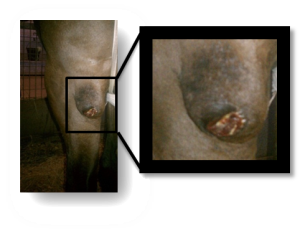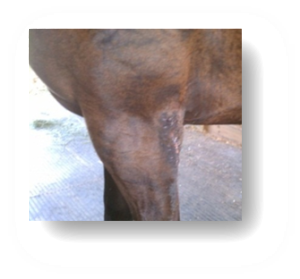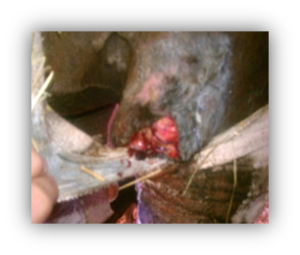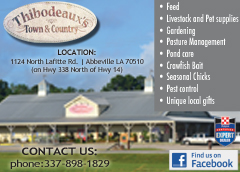Written by Brendt Bonura, DVM
B-Line Equine Veterinary Services
www.B-LineEquine.com
Original Publish Date February 2014
Although typically not harmful, olecranon bursitis (i.e. “shoe boils” or “capped elbows”) is an annoying cosmetic defect that can be difficult to resolve.
What is it? Inflammation of the bursa behind a horse’s elbow, which results in fluid accumulation, and in some cases, fibrous thickening of the capsule.
What causes it? Constant “trauma” to the elbow when a horse lies down. Front shoes, small stalls, and minimal bedding can perpetuate the problem.
How to treat it? Aside from preventing further trauma (i.e. removal of shoes & thicker bedding), initial treatment includes draining of the fluid & injection of steroids into the bursa. Topicals, such as DMSO, can be applied to reduce inflammation from the outside. In some instances, injection of an irritant, such as iodine, can help by causing granulation of the bursa from the inside.
Despite aggressive treatment, however, some cases can persist & call for surgical removal of the bursa. Although many owners are pleased with the cosmetic outcome of surgery, the recovery period is challenging & does not come without risks, such as infection or dehiscence (when the sutures come apart). After surgery, it is necessary to cross-tie the patient for at least 2-3 weeks to prevent stress at the incision site!
Top: Ulcerated capped elbow of a 2-year-old gelding.
Center: 4 weeks after surgical removal of the same shoe boil.
Bottom: Dehiscence of the surgical site, which is a complication that can occur in the first week following surgery.





